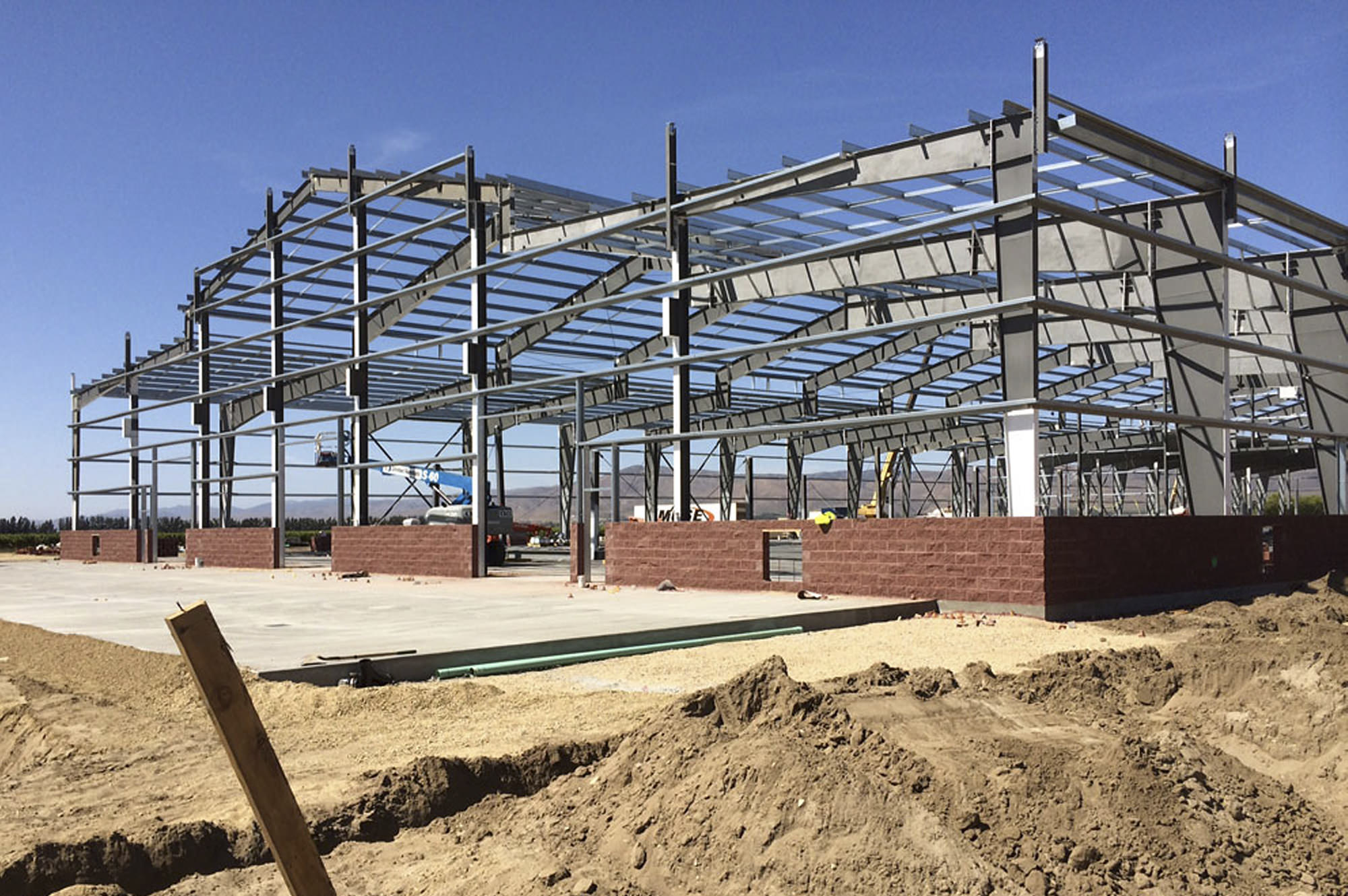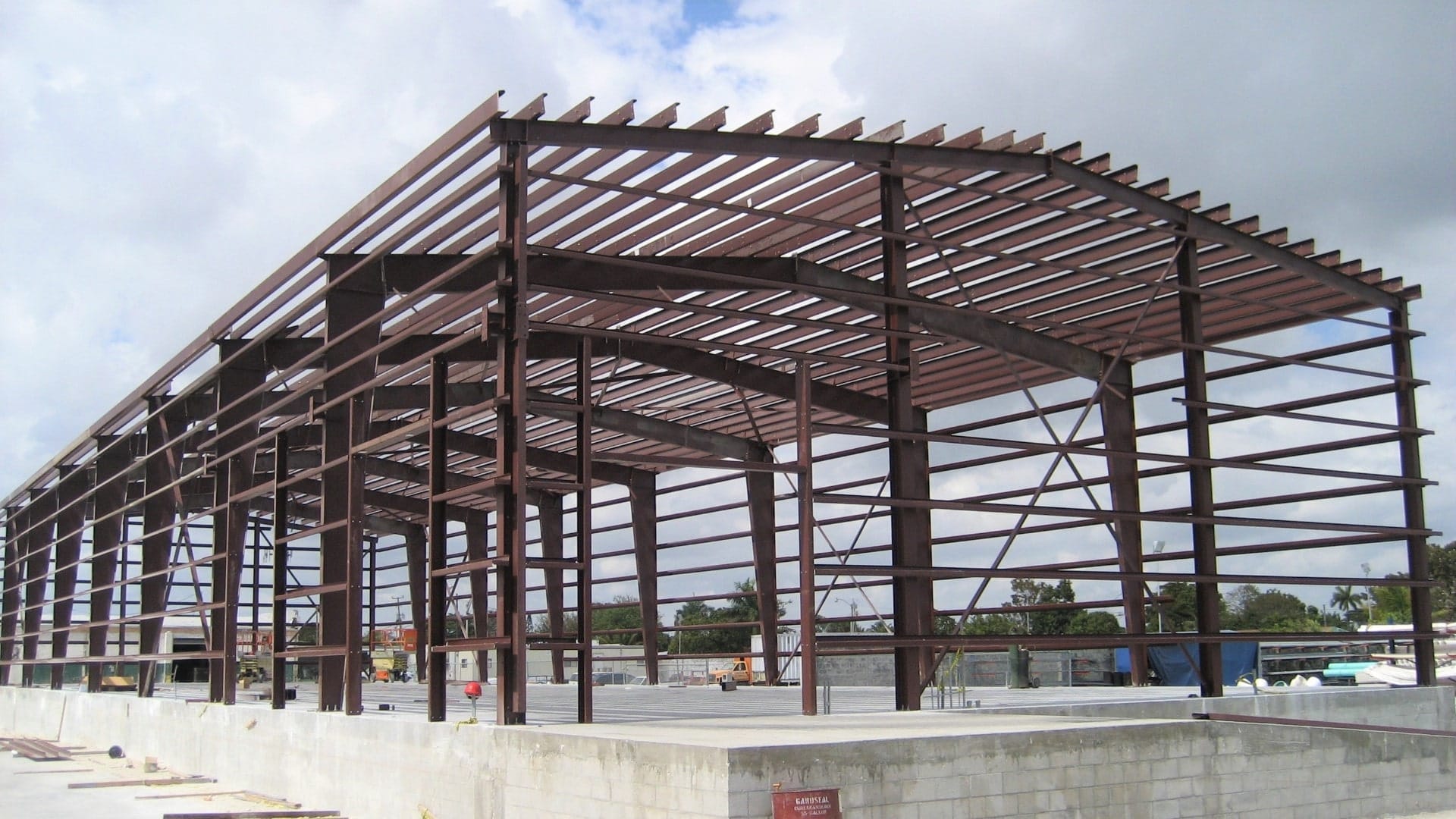Industrial Steel Structure Construction: A Comprehensive Guide
Learn about industrial steel structure construction, its advantages, types, and safety considerations in large-scale building projects.
Industrial steel structure construction has become the backbone of modern large-scale facility development. This article presents a comprehensive view of the construction process, the advantages of using steel, various commonly used structures, and crucial safety aspects.
From factories to warehouses, steel structures offer strength, flexibility, and efficiency that are hard to match with other materials. Let’s delve deeper into the world of industrial steel construction and how it shapes our infrastructure landscape.
1. Industrial Steel Structure Construction: A Comprehensive Overview
Industrial steel structure construction is the backbone of modern large-scale facility development. This process involves planning, design, fabrication, and assembly of steel components to create strong and durable buildings.
The first step in steel building construction is planning and design. Structural engineers work with architects to design structures that meet functional and aesthetic needs. They consider factors such as loads, environmental conditions, and local building regulations.
After the design is approved, the process moves to the fabrication stage. Steel components are produced in factories with high precision using advanced technologies such as CNC machines. This ensures each part meets the required specifications.
The next stage is transporting components to the project site. Careful logistics planning is necessary to ensure timely and efficient delivery.
On-site assembly is a critical stage in steel building construction. Experienced teams use heavy equipment such as cranes to place and join steel components. This process requires good coordination and attention to detail to ensure the structure is properly and safely installed.
After the main frame is installed, the next step is the installation of support systems such as roofs, walls, and floors. This is followed by the installation of mechanical, electrical, and plumbing systems.
The final stage involves quality inspections and testing to ensure the structure meets all required safety and performance standards. Once all requirements are met, the building is ready for use.
Industrial steel structure construction allows for efficient and economical building of large facilities such as factories, warehouses, and distribution centers. Advances in technology and construction techniques continue to improve the speed and precision of this process, making steel buildings the primary choice for various industrial applications.

2. The Advantages of Industrial Steel Structures
Industrial steel structures offer various advantages that make them the primary choice in large-scale construction. Here are some key benefits:
Strength and Durability: Steel has a very high strength-to-weight ratio. This means steel structures can withstand heavy loads using less material compared to other construction materials. Steel is also resistant to fire, earthquakes, and extreme weather conditions, making it an ideal choice for industrial buildings that require long-term durability.
Design Flexibility: Steel buildings can be designed in various shapes and sizes. This gives architects and engineers creative freedom to create unique and functional structures. Additionally, steel structures are easily modified or expanded if needed in the future.
Construction Speed: Steel components can be prefabricated off-site, which significantly speeds up the construction process. This reduces the time needed on-site, minimizes disruption, and allows projects to be completed faster.
Cost Efficiency: Although the initial cost of steel may be higher compared to some other materials, its long-term cost is lower. Steel structures require minimal maintenance, have a long lifespan, and can be fully recycled at the end of their use.
Sustainability: Steel is a highly sustainable material. It can be recycled without losing quality, reducing the environmental impact of construction. Additionally, the thermal efficiency of steel buildings can be enhanced with proper insulation, reducing energy costs.
Adaptability: Industrial steel structures easily adapt to changes in technology or operational needs. Interior spaces can be reconfigured relatively easily without disturbing the structural integrity of the building.
These advantages make steel structures an optimal solution for various industrial applications, from factories and warehouses to logistics centers and advanced manufacturing facilities.

3. Types of Steel Structures Used in Industrial Applications
In industrial construction, there are several types of steel structures commonly used, each with specific characteristics and applications:
Rigid Frame: This structure consists of columns and beams that are rigidly connected, forming a stable frame. Rigid frames are suitable for industrial buildings with wide spans such as warehouses and factories. They are efficient in withstanding lateral and vertical loads.
Portal Frame: Similar to rigid frames, but with the addition of a sloped roof. Portal frames are popular for single-story industrial buildings due to their ease of construction and cost efficiency. They are ideal for facilities such as distribution centers and aircraft hangars.
Truss: A framework structure consisting of bars forming triangles. Trusses are effective for long spans and are often used in roofs of large industrial buildings. They are lightweight yet strong, allowing for efficient roof designs.
Cantilevered Structure: This type has horizontal elements supported only at one end. Cantilever structures are useful for loading dock areas, canopies, and balconies in industrial buildings.
Arched Building: This structure uses curved shapes for structural efficiency. Arched buildings are often used for large storage facilities, sports arenas, and hangars.
Space Frame: A three-dimensional system consisting of interconnected bars. Space frames are ideal for wide-span roofs with minimal support, often used in exhibition centers and airport terminals.
Multi-story Buildings: For multi-floor industrial applications, high-rise steel structures are used. This involves a combination of columns, beams, and floor systems to create strong vertical buildings.
Each of these steel structure types has its advantages and specific applications in the industrial context. The choice of the right type depends on the specific project needs, such as building function, loads to be supported, site conditions, and aesthetic considerations.

4. Safety Considerations in Industrial Steel Structure Construction
Safety is a crucial aspect in every construction project, especially in large-scale industrial steel structure construction. Here are some key safety considerations:
Proper Structural Design: Engineers must ensure that the structural design meets or exceeds applicable safety standards. This includes calculations for wind loads, seismic loads, and operational loads with adequate safety margins.
Material Quality: The use of high-quality steel that meets specifications is non-negotiable. All materials must be tested and certified before use in construction.
Controlled Fabrication Process: Strict quality control during steel component fabrication is essential. This includes weld inspections, non-destructive testing, and dimension verification.
Worker Safety on Site: Workers must be equipped with appropriate personal protective equipment (PPE). Regular safety training and daily briefings before starting work are also important.
Use of Proper Equipment: Equipment such as cranes and lifts must be regularly inspected and operated by trained and certified personnel.
Careful Lifting Planning: Lifting and placing large steel components requires careful planning. Lifting plans must be created and reviewed before execution.
Fall Protection: Fall protection systems such as guardrails, safety nets, and harnesses must be used, especially when working at heights.
Fire Protection: Adequate fire protection systems must be installed, including fire-resistant coatings on steel structures if required.
Regular Inspection and Maintenance: After construction is complete, routine inspection and maintenance are crucial to ensure long-term structural integrity.
Emergency Response Planning: Evacuation and emergency response plans must be prepared and tested regularly.
By paying attention to these safety aspects, the risk of accidents and structural failures can be minimized, ensuring the safety of workers and future building users.
5. Conclusion
Industrial steel structure construction has proven itself as an efficient, strong, and versatile method for building large-scale facilities. From the comprehensive overview we’ve discussed, it’s clear that steel buildings offer a range of advantages that are hard to match with other construction materials.
The main advantages of steel structures, such as high strength, design flexibility, and construction speed, make them an ideal choice for various industrial applications. Their ability to adapt to changing operational needs and technologies also makes them a wise long-term investment.
The various types of steel structures available allow engineers and architects to design buildings that are not only functional but also aesthetic. From rigid frames to arched structures, each type has unique characteristics that can be utilized to create optimal solutions for each project’s specific needs.
However, it’s important to always prioritize safety aspects in every stage of industrial steel structure construction. From careful design, use of high-quality materials, to implementation of strict safety procedures on the project site, every step must be taken to ensure worker safety and long-term structural integrity.
As technology and construction techniques advance, the future of industrial steel structures looks very promising. Innovations in design, materials, and construction methods will continue to drive efficiency and sustainability in this industry, shaping our industrial infrastructure landscape for generations to come.

Post Comment